Decoupling Inside
As I mentioned earlier, the vibrations in the stator, or the entire frame, accumulate and even mix, which acts like a speaker, emitting this as noise to the surroundings. This is precisely where Alphacool has intervened, defining the impeller and the motor part as an independent, frameless fan unit. Here, two halves are simply assembled, creating, in the truest sense of the word, a round unit. The image below shows the disassembled fan, which cannot be taken apart in the final version. Alphacool discarded this for RMA reasons, fearing the O-rings used for decoupling might suffer. But more on that shortly. First, let’s take a look at the disassembled fan, which I chose in blue for visual reasons (more on that later).
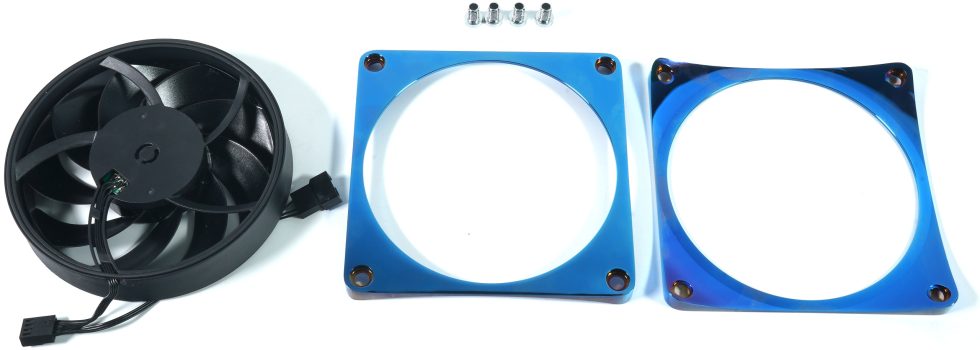
I’ll now refer to Alphacool’s marketing diagram to illustrate the structure. The two metal frame parts are each placed on a thick silicone rubber O-ring, ensuring no direct contact with the vibrating fan unit. Anyone who has built water cooling systems for years and is familiar with O-rings would eventually come up with such an idea. And yes, it works, but this time it’s not about keeping out water, but vibrations.
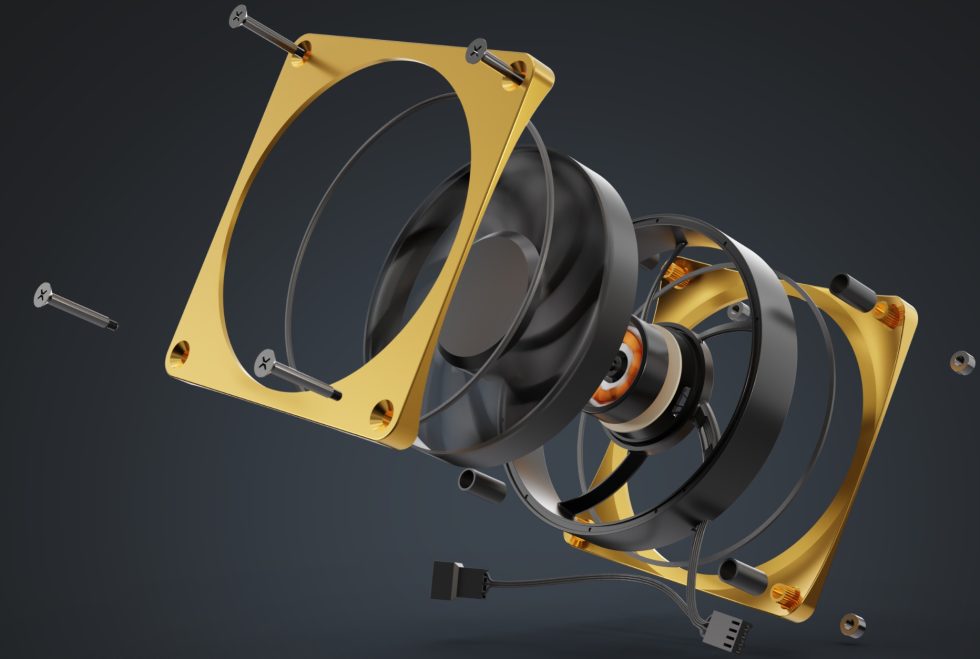
The two O-rings are each placed in a groove, decoupling the outer frame. With almost 2 mm diameter when compressed (otherwise around 1.9 mm), this is sufficient. And it’s precisely here that the decision was made not to make it screwable in the final version. I tried to remove such an O-ring (clamped and fixed) and overstretched it so much that it couldn’t be properly reinserted. So, at this point, customers need to be protected from themselves. Alphacool might miss out on some customization business, but safety first.
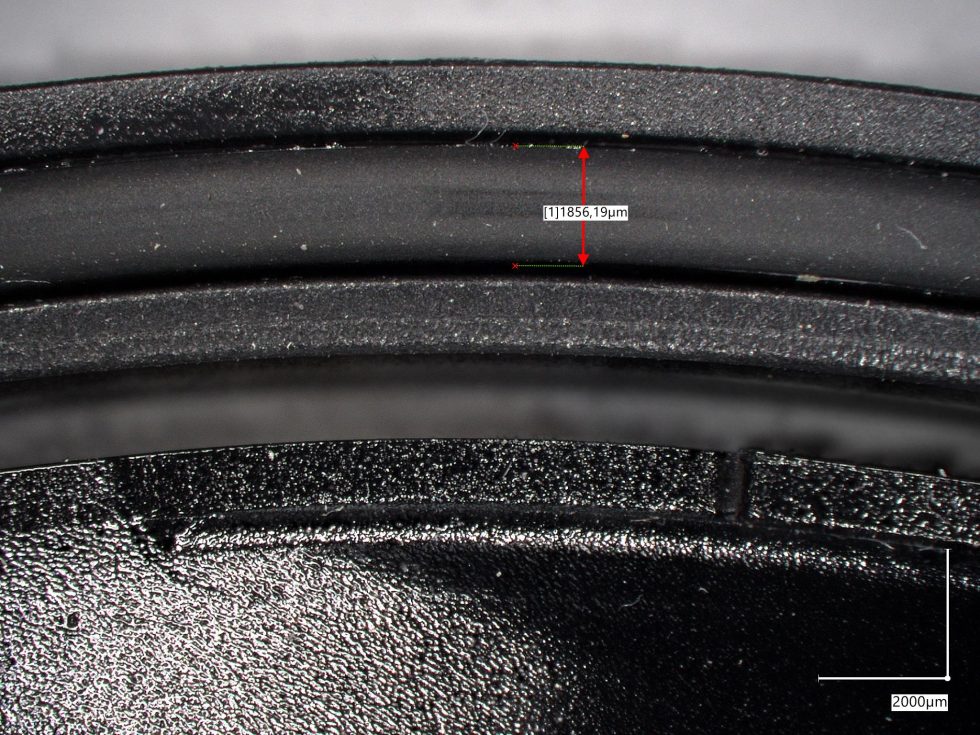
With that, we’ve almost covered this part. Well, almost, because there’s another feature that helps reduce noise emissions and especially the transmission of vibrations to the casing or radiator. Normally, manufacturers use various glued or inserted rubber decouplers at the screw openings, which often remain ineffective when screwed tight. So, what can be done to prevent, for example, the so-called structure-borne noise from reaching there in the first place? The O-rings already keep a lot at bay, but what happens to the rest?
What exactly is structure-borne noise?
Structure-borne noise refers to vibrations that spread in solid media, such as components or machines. In contrast to airborne noise, which spreads in gaseous media, structure-borne noise is often responsible for unwanted noise transmissions in fans. It arises from mechanical stimuli, as I described in detail on the previous page. These are vibrations in the material’s structure. The structure-borne noise moves in a wide frequency range, with low-frequency vibrations often harder to dampen than high-frequency ones.
Since the fan unit was already decoupled with O-rings and thus no longer directly in contact with a component, the sound is no longer transmitted directly, but there is flank transmission: Here, the structure-borne noise is transmitted via structures like the silicone rubber and is already dampened. If the frequency of the sound source matches a resonance frequency of the material, this can lead to increased sound transmission, as is often the case with regular fans. And why such a heavy metal frame? Simply put, increasing the mass of a component can reduce the transmission of structure-borne noise, as a larger mass is harder to set in motion. By choosing suitable materials with low sound conductivity, the transmission of structure-borne noise can be further reduced, as in the case of the Apex Stealth.
The special features of the two-part metal frame and the casting process
We’ve already covered the mass aspect, but the material itself and its production also play a role. The metal parts are produced in zinc die casting, specifically using the hot chamber process. Die casting is a widely used method for producing metal components with high precision and good surface quality. Zinc-copper alloys are of particular interest in this context, as they offer several advantages that make them especially attractive for certain applications. Even though Alphacool specifies ZAMAK, my measurements show very little aluminum and no magnesium at all. And there’s a good reason for that, which I’ll get to shortly.
So why not just regular zinc die casting without anything else? Adding copper to zinc improves the alloy’s strength and hardness without affecting its castability. This results in a material that is both easy to process and durable. Such zinc-copper alloys (with a very low aluminum content) have a low melting temperature and excellent flow properties, allowing precise filling of the mold and resulting in parts with high detail accuracy. Due to the low melting temperature and the alloy’s low abrasiveness, the die-casting tools also have a longer lifespan, leading to lower production costs.
Parts cast from zinc-copper alloy have a smooth surface that is easy to process and coat. The alloy also offers good corrosion resistance, extending the lifespan of the manufactured parts. Due to their advantages, zinc-copper alloys are often used in die casting for the production of precision parts in the automotive industry, mechanical engineering, electronics, and many other sectors. Or in Alphacool fans. Let’s take a look at my laser drilling through the chrome-plated metal frame. Under the thin chrome layer, we see galvanized nickel and then galvanized copper. Only then does the actual die-cast body made of zinc alloy appear:
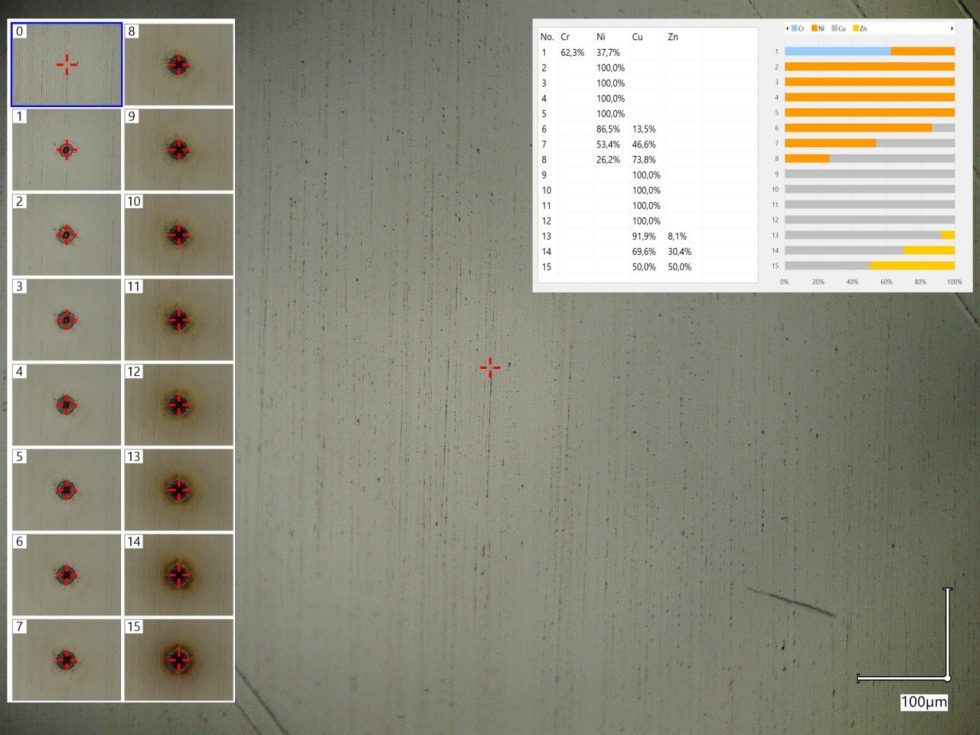
We then see the different components of the alloy in the casting, which is naturally not 100% homogeneous because the metals cannot merge into a single entity:
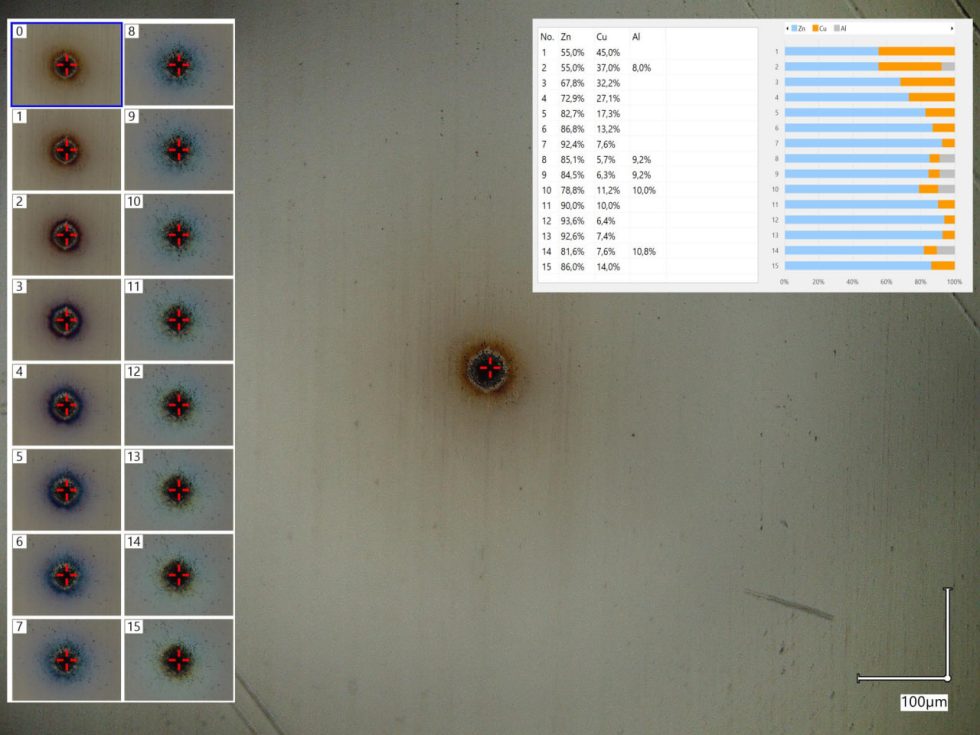
Why this particular alloy?
Such an alloy has an excellent damping capacity of up to 4% at room temperature. This value is significantly higher than that of aluminum and even steel (only up to 1.5%). So, both the mass and the material itself contribute significantly to damping. Then you can screw these fans without any rubber cover – nothing vibrates. Where nothing arrives, nothing can be passed on. And honestly, this is certainly not common knowledge, but it also explains the enthusiasm with which Alphacool is entering the market. And the best part: it’s not just marketing, but a real innovation.
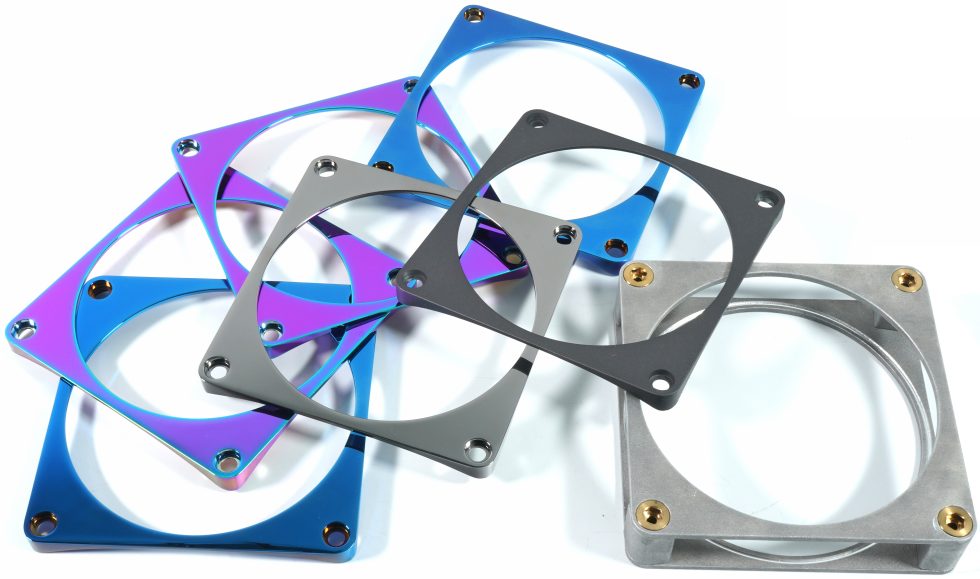
For many elements used in technologically advanced areas, no surface treatment is necessary, but it is for our fans. Of course, there are the decorative effects, improved corrosion resistance, and increased wear and abrasion resistance. The range of coatings for zinc alloy die casting is extremely broad, and new finishing processes are constantly being researched and developed. The feasibility is evident from the contemplated additional colors beyond blue, red, violet, and – please don’t groan too loudly – a dignified pink for a hip Barbie edition. Ok, with that, we’ve covered that too and now know why the following results are as they are: unique and almost class-defining.
- 1 - Introduction and technical data
- 2 - Causes of noise development and vibrations
- 3 - The secret of decoupling and the used material
- 4 - Apex Stealth Metal Power Fan: Measurement results in detail.
- 5 - Comparison with the Noctua NF-A12x25 PWM (2023)
- 6 - Comparison with the Be Quiet! Silentwings Pro 4
- 7 - Comparison with the Cooler Master Mobius 120
- 8 - Summary and conlusion



























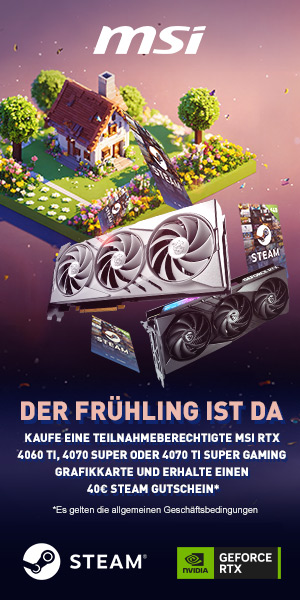






977 Antworten
Kommentar
Lade neue Kommentare
Veteran
Veteran
Urgestein
Urgestein
Urgestein
Veteran
Urgestein
Veteran
1
Urgestein
Urgestein
1
Urgestein
Urgestein
Veteran
Urgestein
Veteran
Urgestein
1
Alle Kommentare lesen unter igor´sLAB Community →